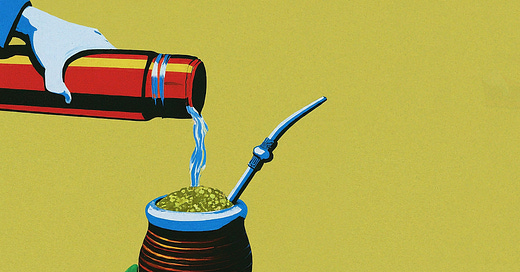A few years ago in Paraguay, the heat was stifling. The kind of heat that made it hard to walk around Asunción, even with all its faded, weather-beaten charm. The greatest relief to this heat came in the form of passing around a cup of yerba maté, but served icy cold. It was as much as a social activity as temperature dropper. That’s the simple beauty of tereré in a few lines, but it’s much more than that too.
Tereré is sometimes reduced to just cold yerba mate (Ilex paraguariensis), a drink often visualized as a hot tea consumed by the gauchos of South America, but rather it is the most common form of interacting with Pohã Ñana, a culture of plant based medicine among Guaraní and Tupi communities in Paraguay and neighboring countries. While the medicinal uses of many native plants have disappeared rapidly throughout the world, here they have been mostly maintained despite the consequences of colonization, war and famine. Walking around Asunción’s Mercado Municipal Cuatro with food historian and cookbook author Graciela Martínez, it was hard not to notice the many stalls full of medicinal herbs, roots and barks. While in most of Latin American markets these types of stalls are often limited, they are abundant here, woven seamlessly into the marketscape with stalls selling tennis shoes and butchered chickens.
Keep reading with a 7-day free trial
Subscribe to New Worlder to keep reading this post and get 7 days of free access to the full post archives.




